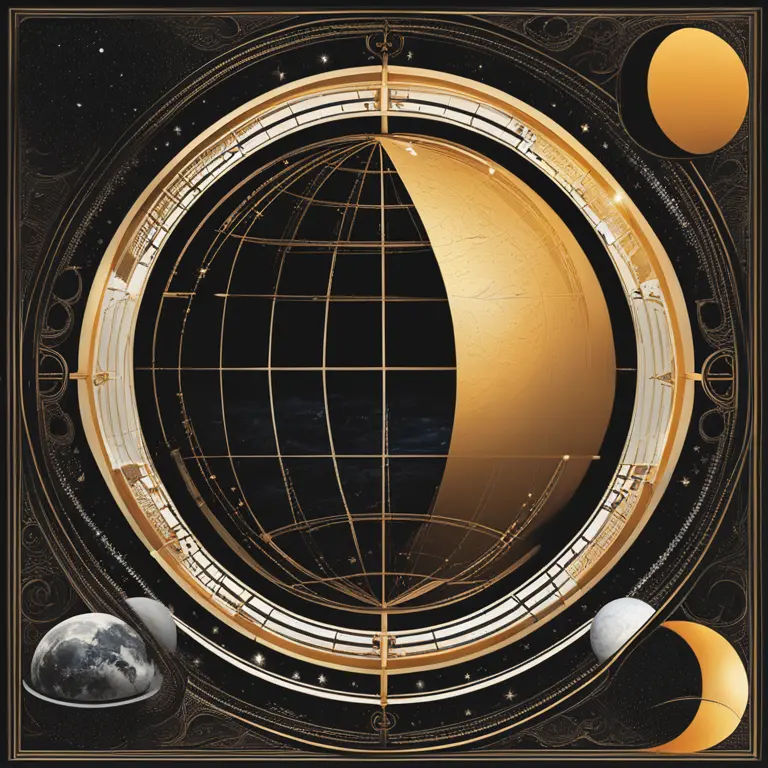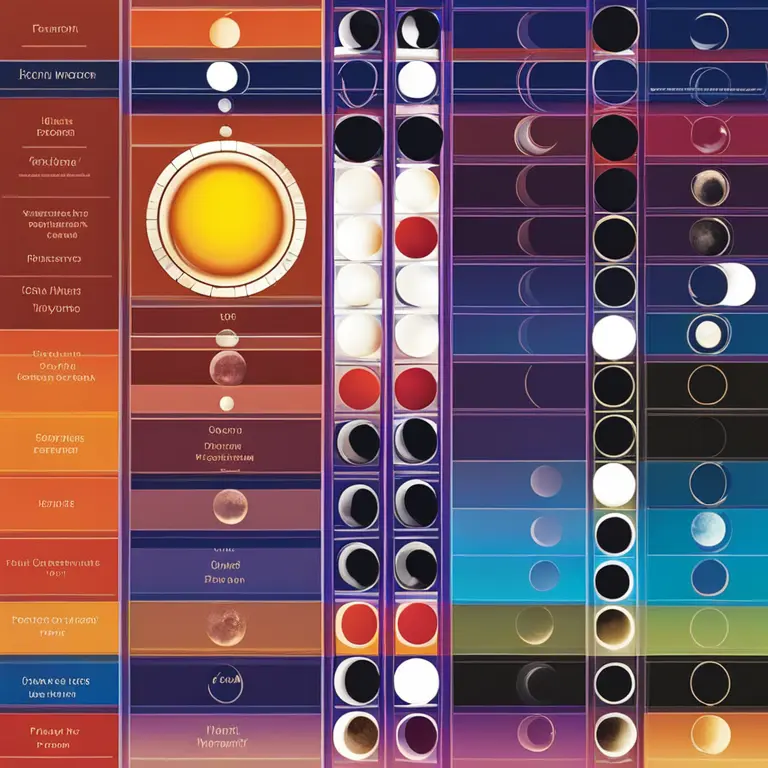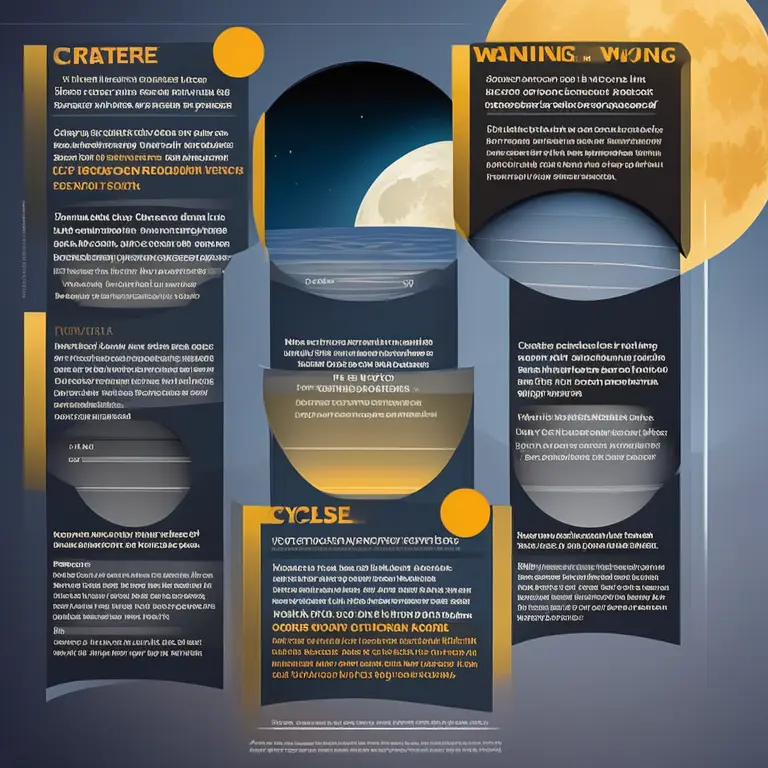
The Causes of Moon Phases: A Celestial Cycle
Discover the astronomical reasons behind the moon's ever-changing visage in the night sky.
article by Priya Deshmukh
The Moon's Orbit and the Sun's Light
The celestial ballet performed by the moon as it orbits our planet is the primary reason we observe phases. This orbit results in varying portions of the moon being illuminated by the sun's rays and visible from Earth. The moon completes one full orbit around our planet approximately every 27.3 days, but because the Earth is also moving around the sun, the complete cycle from one new moon to the next takes about 29.5 days. This period is known as a synodic month and encompasses all the phases we see in the lunar cycle.

The New Moon to Full Moon Journey
Initially, we witness the new moon phase when the moon is positioned between Earth and the sun, making the side that reflects sunlight away from our view. As the moon continues its orbit, a sliver of light emerges on the right side, signifying the waxing crescent phase. This progression amplifies through the first quarter, with half the moon illuminated, to the waxing gibbous stage, when most but not all of the visible surface is alight. The culmination of this growth is the full moon, a resplendent orb fully illuminated as we see the moon's surface that faces the sun in its entirety.

Waning: The Moon's Retreat
Following the full moon, the process reverses. We enter the waning gibbous phase, where a gradually decreasing part of the moon is lit. When it once again reaches the last quarter, the moon is half-illuminated but now on the left side. The final visible phase is the waning crescent, where only a slender arc of light is noticeable. Eventually, the moon disappears from our view completely, returning to the new moon phase as the cycle readies to start anew.

Eclipses and Anomalies
While moon phases are predictable, eclipses add captivating interruptions to this lunar rhythm. A lunar eclipse occurs during a full moon when Earth’s shadow blocks sunlight from reaching the moon. Conversely, a solar eclipse takes place during a new moon, when the moon casts a shadow upon Earth. These events add a layer of complexity to our lunar observations, with the next significant occurrences forecast for the years 2024 and beyond.

Astrological Implications of Moon Phases
In astrology, each phase of the moon is believed to exert unique influences. The new moon is often associated with fresh beginnings, making it an ideal time for setting intentions for the coming cycle. The waxing phase encourages growth and accumulation, aligning with development and progress in personal projects. Full moons, on the other hand, are tied to the realization and culmination of efforts. Finally, the waning moon supports completion, release, and introspection, suggesting a period of reflection and letting go.
Celestial Influences in Horoscopes for 2024
Horoscopes for the year 2024 take into account the moon’s phases when predicting individual and collective futures. Each zodiac sign can gain insights into opportune moments aligned with lunar cycles, further personalizing the role these celestial patterns play in daily life. Trusted astrologers account for more than just the phases but also the moon's placement in various astrological houses and signs to construct a nuanced horoscope.
Published: 1/19/2024
Modified: 1/19/2024
More predictions
Come back here soon to learn more about yourself and your future


Moon Phases: How They Impact On Sleep
Discover how the different phases of the moon may influence your sleep patterns and overall nocturnal well-being.


Moon Phase Soulmates: Cosmic Bonds in Love
Discover the enchanting connection between moon phases and soulmate relationships in this insightful article on cosmic synergy in love.


Are Moon Phases Universal?
Delve into the intriguing question of whether the moon phase is the same across all locations on our planet, and how this celestial phenomenon influences astrology and horoscopes.